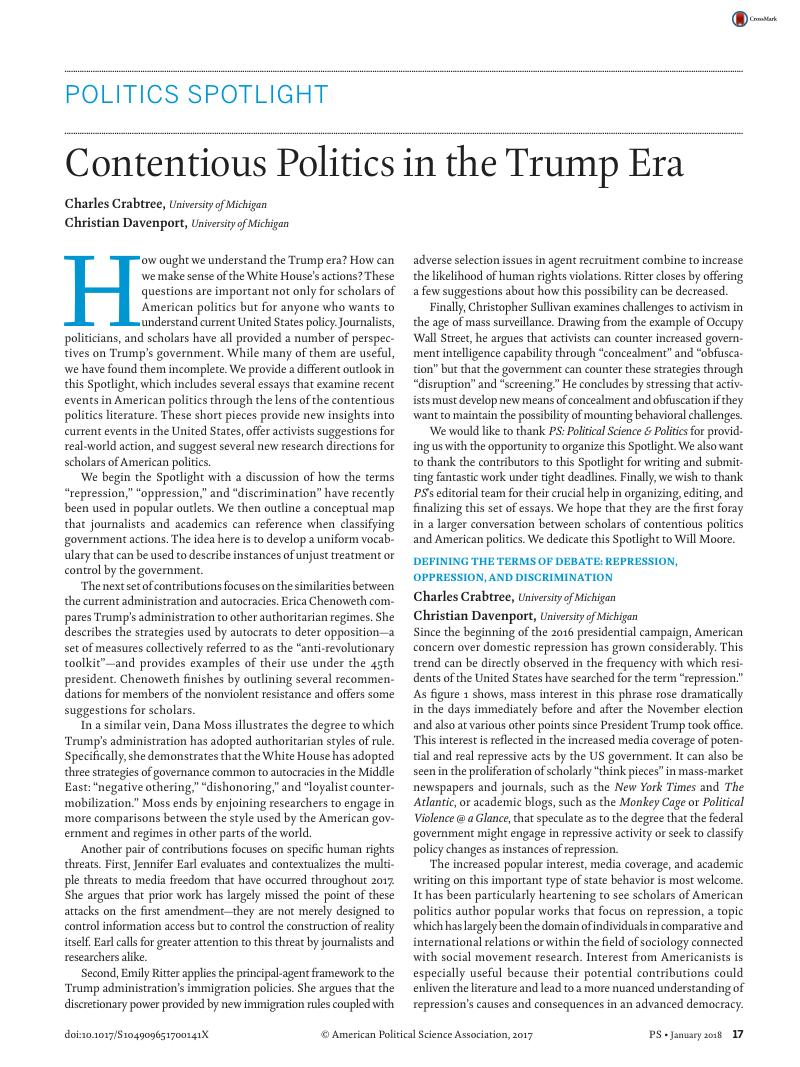Crossref Citations
This article has been cited by the following publications. This list is generated based on data provided by Crossref.
Driscoll, Don A.
Garrard, Georgia E.
Kusmanoff, Alexander M.
Dovers, Stephen
Maron, Martine
Preece, Noel
Pressey, Robert L.
and
Ritchie, Euan G.
2021.
Consequences of information suppression in ecological and conservation sciences.
Conservation Letters,
Vol. 14,
Issue. 1,
Rohlinger, Deana A.
2022.
Digital technologies, dysfunctional movement-party dynamics and the threat to democracy.
Information, Communication & Society,
Vol. 25,
Issue. 5,
p.
591.
Ophir, Yotam
Forde, Devin K
Neurohr, Madison
Walter, Dror
and
Massignan, Virginia
2023.
News media framing of social protests around racial tensions during the Donald Trump presidency.
Journalism,
Vol. 24,
Issue. 3,
p.
475.
Chenoweth, Erica
and
Cunningham, Kathleen Gallagher
2023.
Guest Editors’ introduction: Nonviolent resistance and its discontents.
Journal of Peace Research,
Vol. 60,
Issue. 1,
p.
3.
Berlin, Mark S.
2023.
Does Criminalizing Torture Deter Police Torture?.
American Journal of Political Science,
Vol. 67,
Issue. 4,
p.
932.
de Sales, Alain
2023.
Handbook of Global Leadership and Followership.
p.
1.
de Sales, Alain
2023.
Handbook of Global Leadership and Followership.
p.
375.



